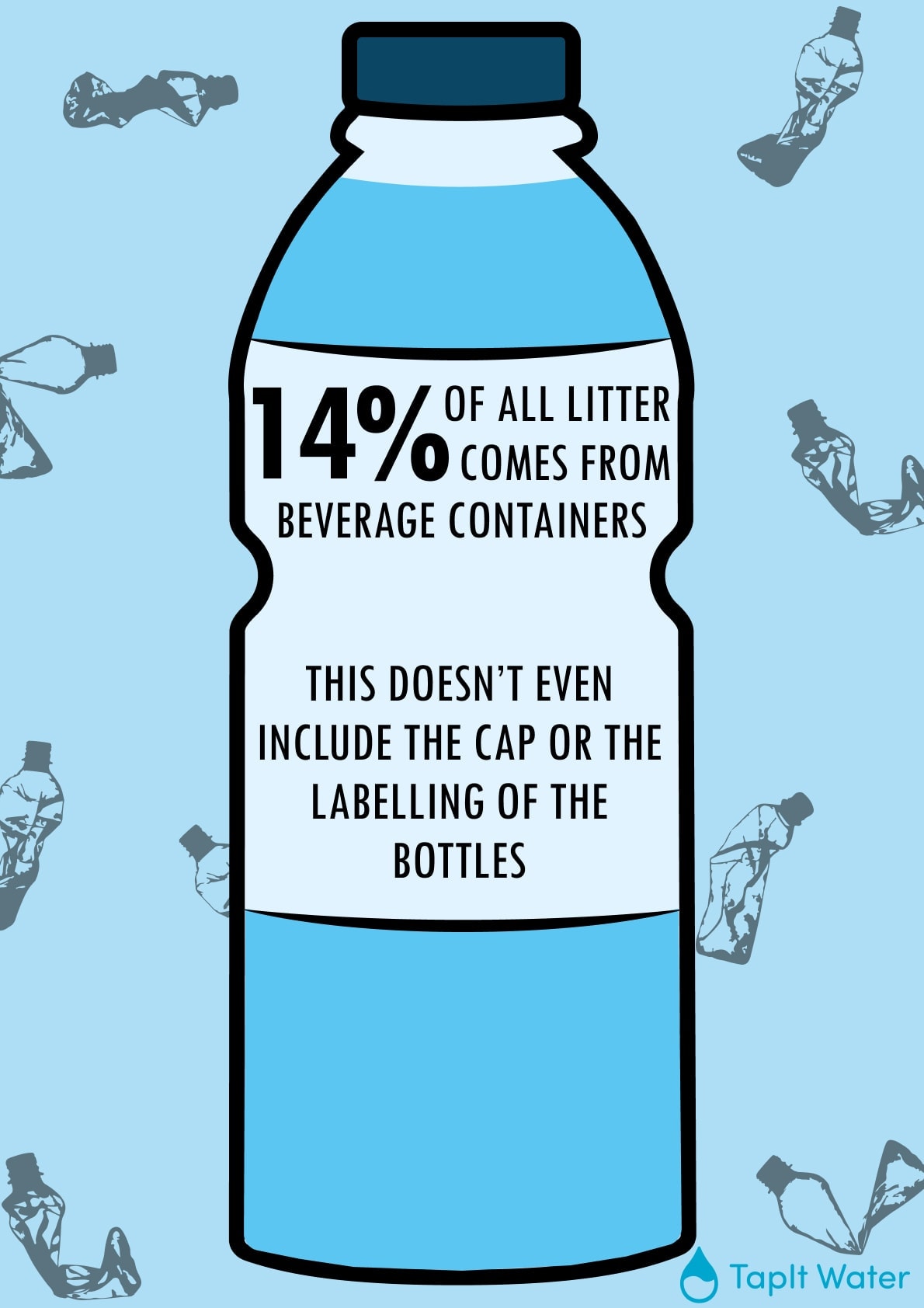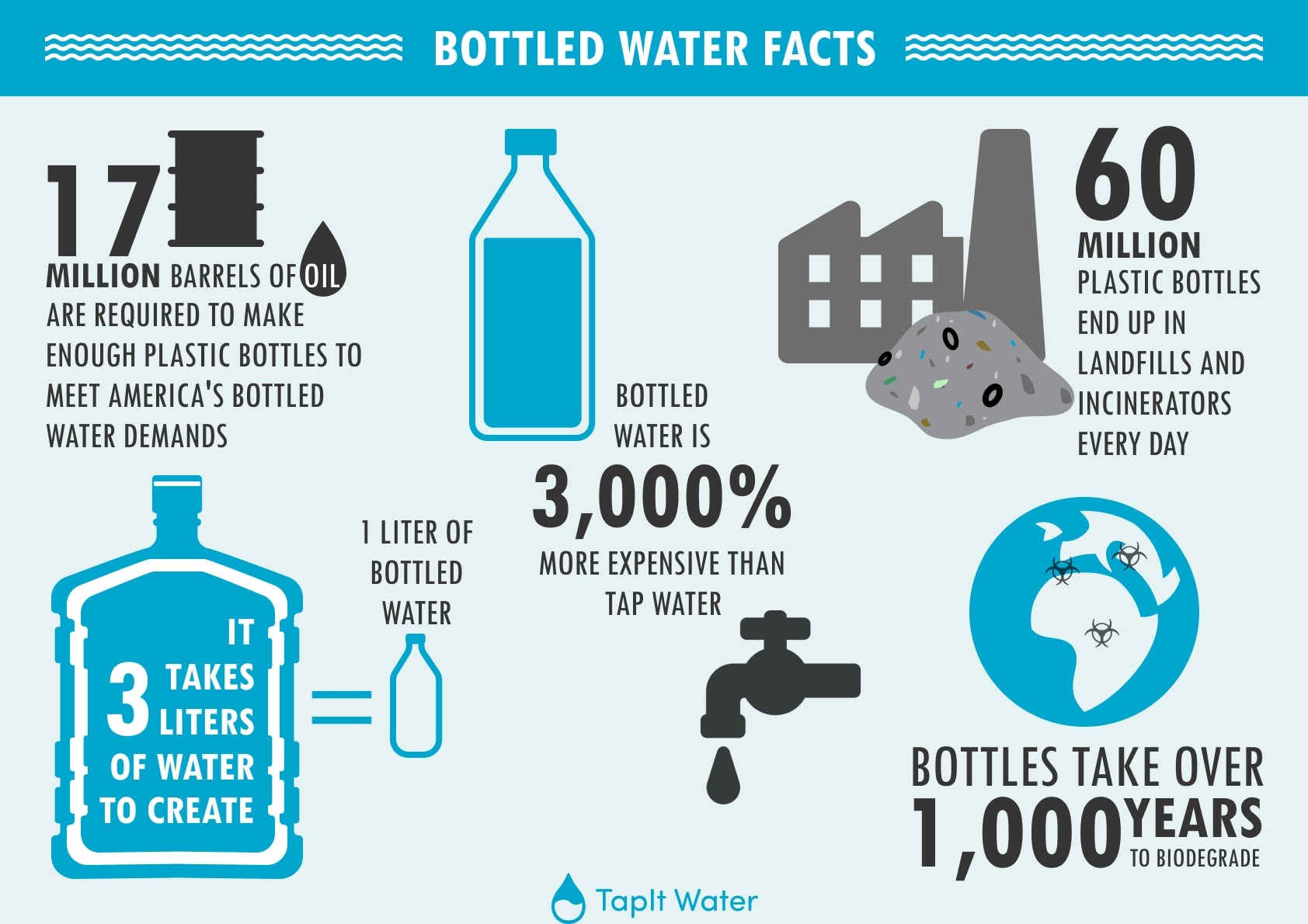20 Bottled Water Statistics & Facts: 2025 Industry Report
-

- Last updated:

Note: This article’s statistics come from third-party sources and do not represent the opinions of this website.
Though most of us in America have never had to worry about clean water outside the occasional boil advisory, bottled water is an extremely popular beverage. Many people don’t like the taste of their tap water, and in many places, their buildings still contain lead pipes. The water is usually not very cold from the tap, especially during the summer months, and it’s not very portable. Bottled water is convenient and readily available, but there are quite a few downsides to using it for the environment, and the water your drinking may not be much better than tap water.
Join us while we take a look at some bottled water facts and statistics to see if it’s really any better for you, and the price is justified.
Bottled Water Statistics
- 60 million plastic bottles end up in landfills and incinerators every day.1
- Plastic bottles make up less than 1/3 of 1% of all waste produced in the United States.2
- It takes 3 liters of water to create 1 liter of bottled water.3
- Bottled water companies do not need to disinfect the water or test for viruses.4
- More than 17 million barrels of oil are required to make enough plastic bottles to meet America’s bottled water demands.5
- 86% of water bottles become garbage or litter.6
- Bottles take over 1,000 years to biodegrade.7
- Ordinary tap water is the source of up to 64% of the bottled water sold.8
- Bottled water is 3,000% more expensive than tap water.9
- Many bottled water companies have reduced the amount of plastic in their bottles by an average of 27%.10
- 14% of all litter comes from beverage containers, and that doesn’t count the cap or label.11
- Bottled water accounts for less than 2% of the groundwater used in the United States each year.12
- Plastic bottles are among the most recycled type of plastic to make it to the recycling plant.13
- Plastic bottles can release antimony into the water.14
- Bottled water companies do not need to use certified testing.15
Bottled Water vs Tap Water
Bottled water is no better than tap water because federal guidelines require frequent monitoring to make sure the water is up to safety standard. Municipalities are also obligated by law to disclose to the public the test results, and they must notify the public if there is a problem. Furthermore, between 25% and 60% of bottled water is tap water, and tap water only costs pennies per gallon. The bad taste in tap water does not mean the water is hazardous and is likely a result of the cleansing and sterilization process. It’s easy to remove this taste by using a water filter at home. A single point filtration device is much less expensive than bottled water and is much better for the environment.
Facts on Bottled Water Production
Companies that make bottled water are not susceptible to the same scrutiny as public water sources. They don’t need to have the water tested for viruses or disclose to the public any problems that might arise with them. Most do not even publicly disclose where the water comes from, so most Americans know far less about their bottled water than about their tap water.
- Springwater comes from naturally occurring springs. Popular brands include Acqua Panna, Fiji, and Sierra Springs.
- Purified water can come from any source, including the tap. Popular brands of purified water include Aquafina, Culligan, and Deer Park.
- Mineral water is spring water but it must contain at least 250 parts per million (ppm) total dissolved solids (TDS). These solids are usually helpful minerals like calcium, magnesium, zinc, and sodium. Popular brands of mineral water include Evian, Farris, and Lithia.
The Effects of Bottled Water on the Environment
The effects of bottled water on the environment are wide-reaching. Up to 60 million bottles can reach the landfills each day. Many more bottles end up on the side of the road, in our scenic locations, and our oceans. They have found plastic in the stomachs of birds, turtles, and fish. In 2019, a dead whale had 88 pounds of plastic in its stomach, along with other contaminants humans had put there. The Great Pacific Garbage Patch is a large patch of garbage in the ocean created by water currents. It contains nothing but trash and is larger than the state of Texas.

In Conclusion
We hope you have enjoyed reading our look into the bottled water industry and have learned something new. Even though water bottles are the most recycled type of plastic, we need to do more to protect our land and oceans from this long-lasting waste product. The best way is to stop using it. Use a home water filter to refill bottles to keep cold and take with you to stay hydrated. In many cases, allowing ordinary tap water to stand overnight in a glass pitcher is enough to allow the chlorine to dissipate, leaving the water tasting fresh and clean. If you think it can be helpful to others, please share these bottled water facts and statistics on Facebook and Twitter.
- See Also: How and Where to Recycle Water Filters?
Featured Image Credit: congerdesign, Pixabay
Contents




